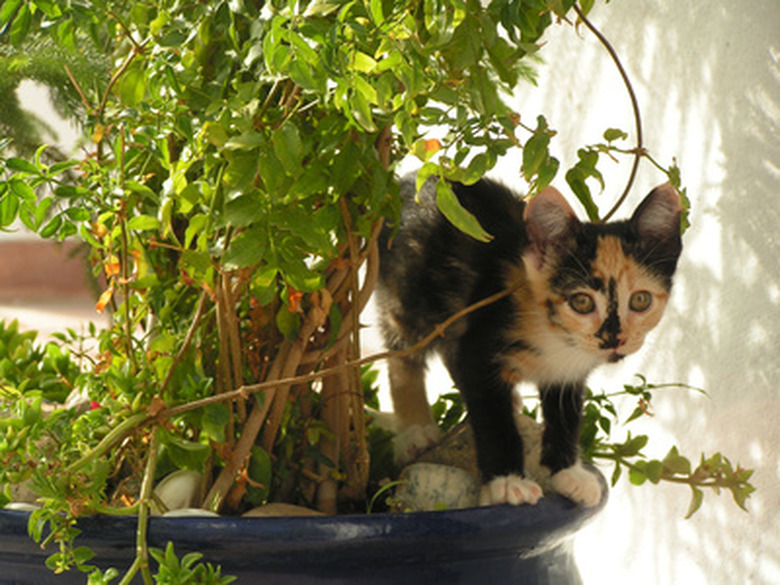Prayer Plant Toxicity
Step 1
Prayer plant is a houseplant or greenhouse specimen that is only hardy in zones 11 to 12. The plant grows in a bushy shape with large oval leaves highlighted with colored veins. The leaves fold at night as if in prayer and this characteristic provided its name. There are a couple of species with leaf variations. M kerchoveana has light green leaves and brown color between the veins, while M erythrophylla has multi-colored leaves.
Care
Step 1
Prayer plant is also known as Maranta leucoreura. It is a heat-loving plant that needs high humidity to grow well. The sunlight should be indirect to prevent burning of the foliage. Prayer plants prefer nicely damp, but not soaking soil, and should not be kept sitting in water. The plant needs to be fertilized every two weeks, from spring to fall. Prayer plants go dormant in the winter and will have less needs during this time. The soil can be kept dryer, fertilization should cease and it can tolerate cooler conditions (60 degrees Fahrenheit). Misting the plant daily helps keep the humidity surrounding the leaves. The leaves should be kept dusted.
Step 2
- Prayer plant is a houseplant or greenhouse specimen that is only hardy in zones 11 to 12.
- The sunlight should be indirect to prevent burning of the foliage.
Non-toxic Plant Lists
Step 1
Plants rate third in cause of poisonings in children, next to medicines and household chemicals, according to the University of Nebraska. The worry that your child (or pet) might get into a toxic plant and be harmed is enough to scare most parents away from indoor plants. But there are numerous agencies–from Poison Control to university extensions–that publish non-toxic plant lists. It is easy to identify your plant and check its toxicity before you bring it into the home.
Prayer Plant Toxicity
Step 1
The Prayer plant is listed as non-toxic on several websites for pet owners. It is also listed as non-toxic on the University of Nebraska Extension's toxicity pages and numerous individual state publications. It seems unanimous that the plant is not dangerous either through digestion or contact. It makes an excellent addition to a home with little ones and four-footed friends. It is also non-toxic to birds and can be added to a terrarium with invertebrates.
Step 2
- Plants rate third in cause of poisonings in children, next to medicines and household chemicals, according to the University of Nebraska.
- It is also listed as non-toxic on the University of Nebraska Extension's toxicity pages and numerous individual state publications.
Plants to Avoid
Step 1
Prayer plant is safe for the home environment and your family. But numerous other common houseplants are not. The Garden Helper lists philodendrons, crown of thorns, amaryllis, spider plants and ivy as dangerous. Other plants include: azalea, bird of paradise, iris, lily of the valley, tulips, daffodils and numerous other plants. It is best to consult your local Poison Control to verify the safety of any plants you bring into the home.
